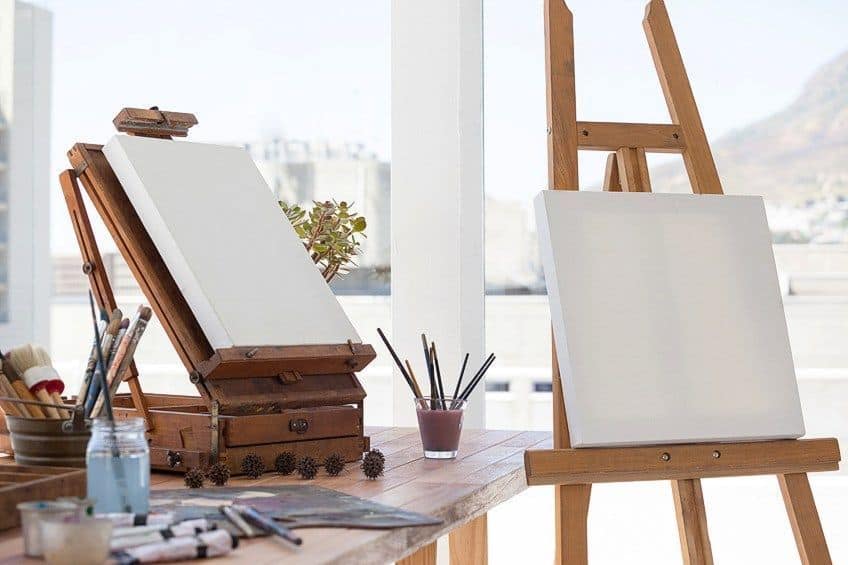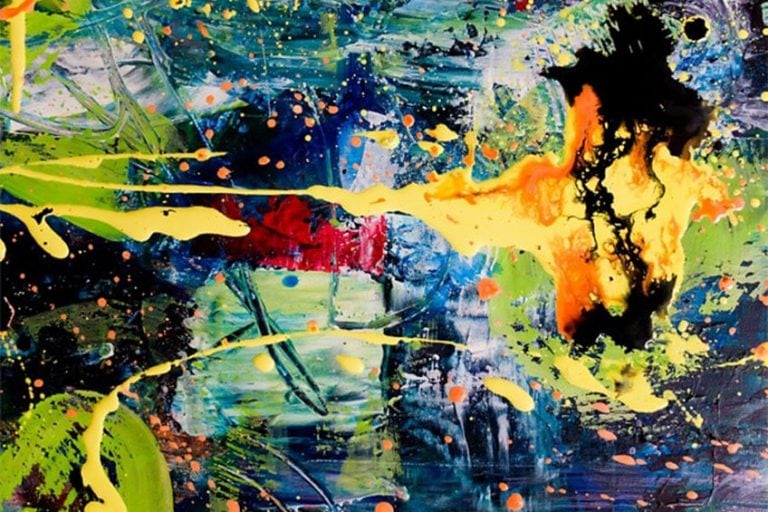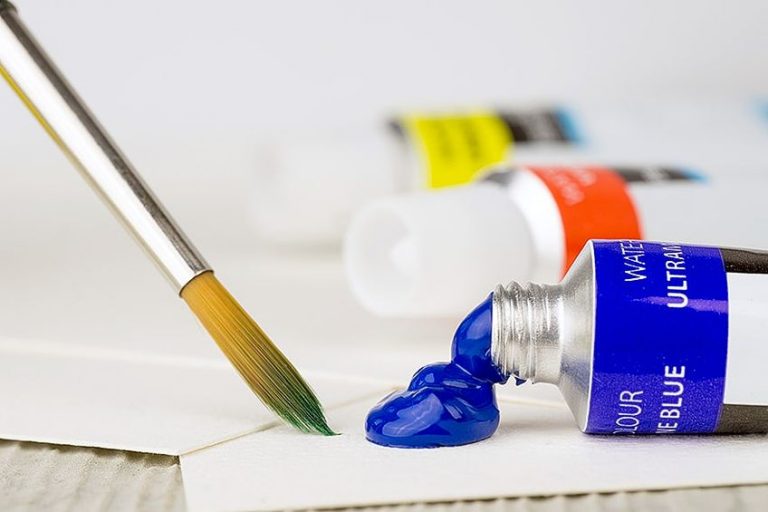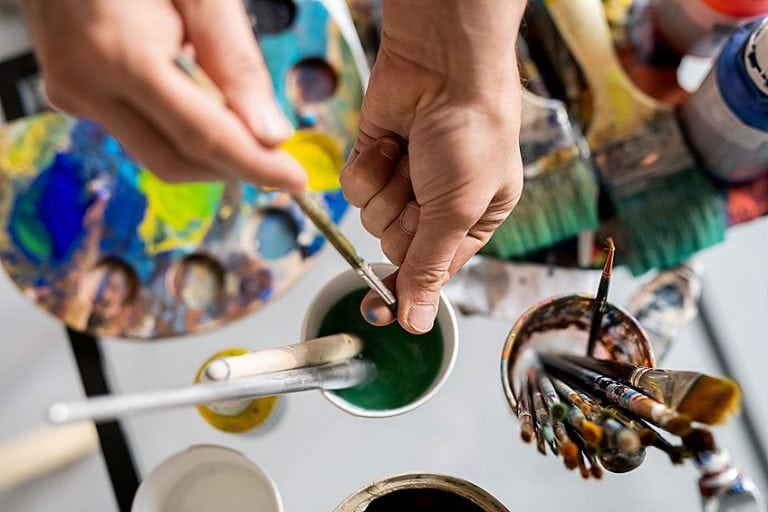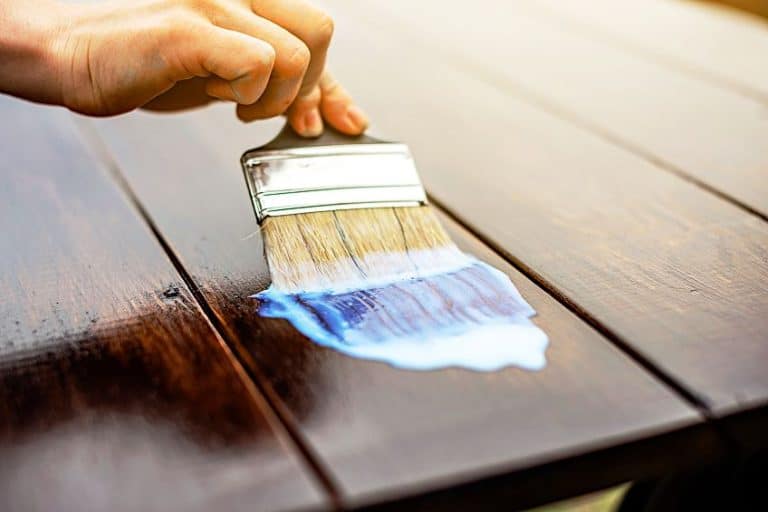Painting Surfaces for Acrylics – Acrylic Paint on Different Surfaces
Acrylic paints are one of the most versatile paints on the market, as you can paint on almost any surface or substrate you want with them. There is a large variety of surfaces available; if the surface for acrylic paint is not too shiny or oily, you can most probably paint on it. In this article, we will be helping you find out what surfaces to paint on and what best suits your acrylic paint project.
Painting Surfaces for Acrylics
When we think of painting with acrylics, a painting canvas is what comes to mind. However, there are numerous items you can paint on using acrylics. However, you must familiarise yourself with the different surfaces and decide what will work best for you.

The Importance of Choosing the Right Surface for Acrylics
There are three aspects you need to consider before you start to paint, which include what paintbrushes you need, the type of paint, and the surface you intend to paint on. Many painters, artists, and DIY enthusiasts, seem to focus on good quality paintbrushes and paint, but they seem to overlook the importance of good surfaces for acrylic paint.
You need to take into consideration a few things when choosing a surface for your acrylic painting.
The Paper Surface Tooth
The paper surface has a tooth, which means the surface needs to have a texture that will allow the paint to bind to it. The tooth will be the grain that you have with canvas or wood so the paint can bind to the surface. Unlike glass, which is very smooth, the paint cannot bind, so it can easily be scrapped or peeled off. The type of surface you choose should be appropriate to what type of painting you are going to paint, as the surface plays a large role in how the paint is going to handle it. Paint tends to dry slower and move freer on a smooth surface, and a porous surface has the opposite effect.

Quality of the Painting Surface
Some substrates or surfaces can induce discoloration, which takes place when the water content of your acrylic paint draws out impurities from your surface as the paint dries. This can result in discoloration over time. Ensure the quality of your surface as different substrates contain different contaminants and colorants. So, whether you are just pouring out paint onto a surface, or painting in fine detail, the correct surface will completely transform your art piece and give it longevity. Making a poor choice of the type of surface to paint on, can lead to frustration.
Choosing correctly will allow you to enjoy all the advantages of using acrylic paint.
Types of Surfaces for Acrylic Paint
The most common substrate or surface for acrylic paints is canvas, but there are many more surfaces for acrylic paint. Some of these are different types of paper, wooden panels, glass, plastic, fabric, ceramics, and Medium Density Fibreboard (MDF), and you can even use it on your skin. Let us check out a few of the things you can paint on in greater detail.

Canvas
Canvas is one of the most popular things you can paint on with acrylics and is made from fabrics like cotton or linen. Cotton is cheaper and ideal for small to medium-sized paintings, whereas linen is more expensive, durable, and comes with a rougher surface texture. Linen canvases are also more suited for larger paintings. These canvases can be raw, pre-primed with gesso, or pre-stretched. Many artists make use of the pre-primed, as the canvas is ready to use straight away. If you are a beginner, then this type of canvas is ideal. The pre-stretched canvas is more suited for the professional as stretching a canvas needs experience and time. You can also buy a canvas that is made from jute or natural fibers.
Cotton canvas is most used by artists, but linen is superior in strength, but it may not be the most ideal canvas to use with acrylic paints.
Cotton Canvas
Let us now consider the two primary canvas types in more detail, starting with cotton. When painting small and medium-sized paintings, cotton canvas is perfect. The canvas has a slight texture and can be purchased in a pre-primed and pre-stretched form, so you can get straight to your painting without first worrying about the surface preparation and stretching process. The cotton canvas surface is a lot more flexible than the linen surface, but it may pose a problem if you are going to use it for large-scale painting. The problem may arise when the cotton fabric dips in the middle of the canvas because the fabric is not rigid enough.

The cotton fabric canvas has a prominent weave, so it may be necessary to smooth the grain slightly for more detailed work, this can be done by applying some gesso to the canvas surface. If this is unsuccessful, you can use a bristle brush, which will make it easier to get heavy body paint into the weave, or you can use an eggshell finish cotton canvas. An eggshell canvas finish is a super smooth surface and is ideal for airbrush techniques and portrait paintings. To prepare your cotton canvas for the eggshell finish, wet sand the gesso surface using 400 grit sandpaper, using a circular motion until the surface is smooth. Be careful not to sand too much as the surface will become brittle and crack.
Linen Canvas
Linen is a far tougher surface, more durable and rigid than cotton, which can provide your canvas with the support it needs. This is the main benefit of using a linen canvas as it gives a firm surface for your paint, and it will not sag or warp under the pressure of heavy brush strokes. This makes it more appropriate for larger paint works. However, it is a lot more expensive than most of the other canvas options, which means that this type of canvas is suitable for hanging your artwork in a gallery and is a larger art piece. This is important as your artwork will remain stable throughout the painting process. It will also remain in perfect condition for years to come, will not warp or bend, and is also easier to transport than wood.
Linen canvases come in a variety of textures and weights, and smooth linen surfaces are perfect for detailed work as it gives less surface drag. It also has the option of spreading the paint further across the canvas, and the rough texture helps for absorbing the paint.
Tips for Preparing Canvas for Acrylic Painting
Pre-primed canvases have been prepared with acrylic gesso and come in a variety of styles, materials, weights, textures, and woven patterns. You also have single as well as double-primed options. The pre-primed canvases are perfect if you are a beginner, as there is no need for preparation, and start immediately. However, if you buy a raw canvas, then there are some preparation tips you can follow.
- Acrylic gesso is a non-yellowing, high-quality medium that will seal and add a tooth to your canvas before you apply your paint. It comes in clear, black, white, gray, and super heavy formulations.
- Apply the gesso to your raw canvas only after you have stretched and stapled it to the stretcher bars, be careful not to stretch it too tight as the drying paint can cause shrinking.
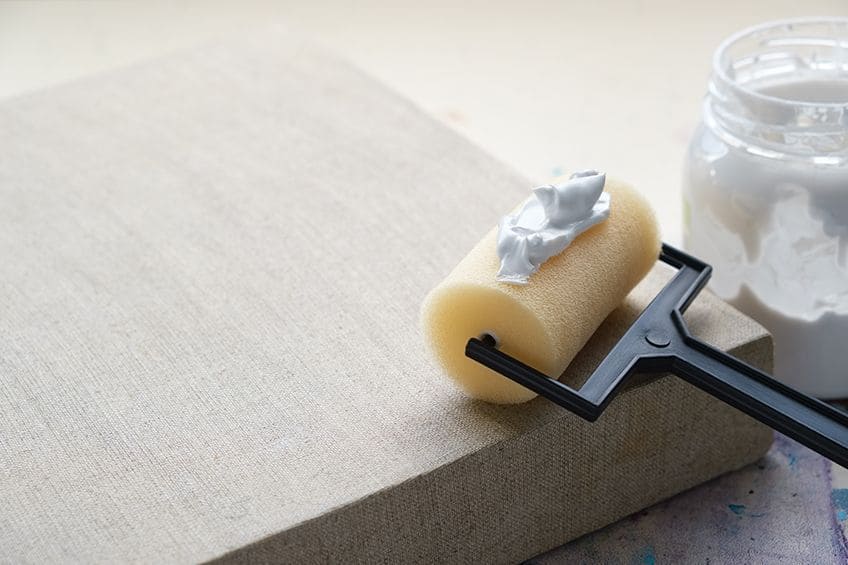
- After applying the gesso let your canvas dry for more than 24 hours before you apply your paint .
- Numerous coats of gesso are needed if you are going to paint with oil paints, which will provide you with a smoother surface, and better adhesion.
- You can apply acrylic gesso with a brush, or trowel or you can spray it onto the canvas.
- For a smoother surface apply the gesso with a painting knife or squeegee and work the paint into the weave, and lightly sand afterward with a fine-grit sandpaper.
Paper
Paper is the cheapest and easiest material to use for acrylic paints, especially if you want to thin your paint with lots of water, as the paper has a very absorbent surface. Paper can also be laid flat on a table or supported upright on an easel so that the low viscosity of the acrylic paint will not run.
Acrylic Paper
Acrylic paper is specially designed for acrylic paints, it is a heavyweight paper, and you can buy it in sheets, or pads. It can support any kind of acrylic technique you want to experiment with. You should always prime the paper with acrylic gesso, which will help in preserving your artwork for many years. You can paint with acrylic paint on any type of paper, but to prevent your paper from warping or completely dissolving, you need to ensure you use high-quality archival paper that will make sure your artwork will last for a long time.
The thicker the paper the better, paper that weighs 290 grams per meter or higher. The heavier the paper, the more absorbent it is, and it will be more rigid, making it less prone to warping and breaking.
Watercolor Paper
Watercolor paper can also be used for acrylic paints and is supplied in a range of textures, grades, and sizes. You have two main categories of watercolor paper, which include your artist grade as well as your student grade. The artist-grade paper is better quality and more expensive, but if you are a beginner, then the student grade is ideal for experimenting. You can buy watercolor paper in separate sheets, in large rolls, and in spiral-bound pads, which are ideal for outdoors and only come in student-grade paper.
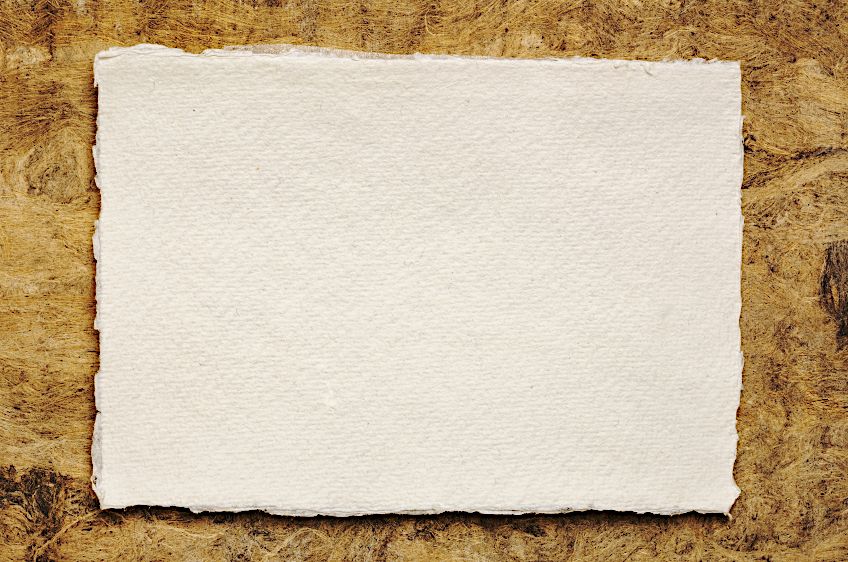
Other Paper Types
There is colored paper that is supplied in a range of textures and qualities, allowing you to create various effects by painting on toned ground. This is where you only need to add dark and light colors and leave the toned ground unpainted as the middle value.
There are also Japanese, Indian, Thai, and bark papers available for you to experiment on, where each one has its own unique texture, giving you a very unique way to create many distinctive art pieces of your own.
Tips for Preparing Paper for Acrylic Painting
Unlike canvas, most papers do not need to be primed before starting your painting, but they do need to be sealed after you have finished your artwork. This helps to preserve your acrylic paint from cracking and the paper from wrinkling.
- You can seal the paper before you start to paint, which will prevent too much absorption of water into the paper fibers.
- To keep your paper flat, tape the paper edges to your backing board and only remove the tape once the painting has dried.
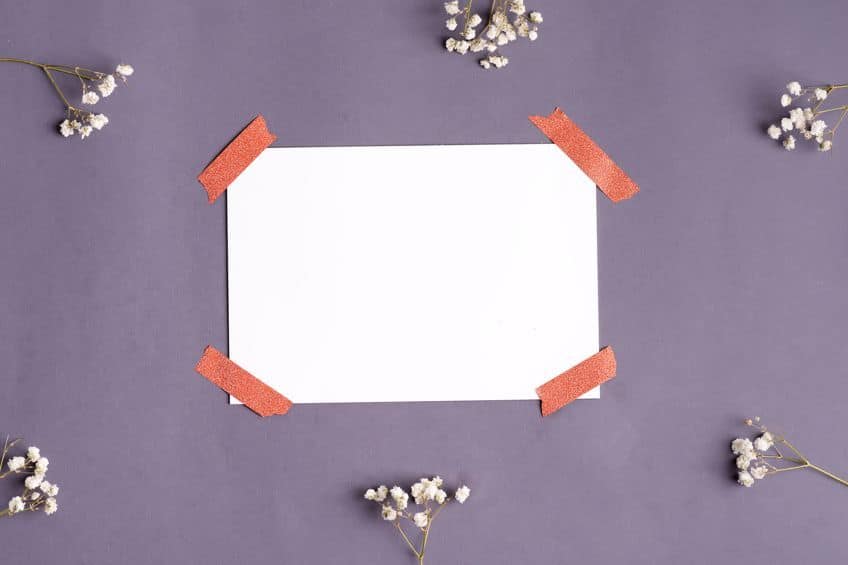
- You can use clear gesso if you are looking for the color of the paper to be visible.
- The clear gesso will also give your paper surface a tooth, which is an excellent ground to use for pastels.
Wood
Wood is the most rigid, solid, and stable surface for your acrylic paints, especially where certain painting techniques require thick applications of paint and a rigid solid surface. Wood also allows you to create fine painting detail without having to cope with heavy textures. Wood has a very smooth surface, allowing the paint to spread much further, and wood offers less resistance to your brush strokes, but it also has no texture for the paint to adhere to. Painting directly on unprimed wood is not advisable, as the paint will soak into the wood surface, which uses a lot more paint.
The paint will also dry faster, and the natural elements of the wood can affect your painting later.
Without properly priming your wood surface first, it can cause the wood to swell and result in mold forming on the wood. Wood is also a much heavier surface than canvas or paper, and if you want to create a large art piece, it can become very difficult to move around and not a good idea for posting to clients. Let us now consider the various wood types available in more detail.
Hard or Solid Wood Panels
Hard or solid woods have been in use for hundreds of years and have mostly been used for oil paints, but acrylic paints can also be used on this type of surface. The type of wood that is suitable includes the following:
- Walnut
- Maple
- Birch
- Oak
- Mahogany
These can last for a very long time making them a very good alternative to canvas. Out of all the hardwoods available for acrylic painting, mahogany is the best choice as it is resistant to rot. However, if you properly prime your wood surface before painting and keep them indoors, then all the hardwood choices can be successfully used. Hard or solid woods are not as popular for acrylic painting as the other surfaces, because they can be very expensive. They are also very heavy, making them difficult to handle and transport. Birch wood is ideal for large paintings as it can be supplied in very thin condition and comes in lightweight wood panels that can be easier to handle.

Solid and hardwoods can be purchased from any hardware store, and if they have a resident carpenter, then you can choose the thickness and size of your wood panel. Be careful when using hardwoods, as they contain natural elements, impurities, and resins that can bleed into your paint layers and could result in yellowing and staining. Therefore, it is very important when using hardwoods for acrylic painting, that you spend some time cleaning the surface first, applying a stain sealer, and priming before you start to paint. It is not advisable to paint on softwoods as they are prone to warping.
Hardboard Panels
Hardboard panels comprise a mixture of different wood fibers that are molded into a board under pressure and heat. This is then glued together with a natural adhesion of lignin and is commonly known as Masonite, or plywood. Some of these boards require a tempering process that involves the board being submerged in oil as soon as it comes out of the hot press. This process makes the board hard, which makes this surface unsuitable for acrylic paints as the acrylic paint will not mix with the oil.
It is recommended that you use untempered hardboard if you want to paint with acrylic paints. The untampered hardwood is much softer and a little more absorbent than the tempered hardboards, making it ideal for acrylic painting.
Hardboards provide a sturdy and smooth surface and are also durable and cheap, making them excellent painting surfaces for beginners. Even some professional artists prefer painting on hardboards instead of canvas. The front of the hardboard is smooth, but the back is textured and rough, therefore, it is better to paint on the front of the hardboard. It is advisable to first sand the surface before you start to paint, giving it some tooth or texture. It is not necessary to prime first, but applying some acrylic gesso will make a difference to your painting. The best hardboard to use for acrylic painting is the Gesso board, as it is supplied in a pre-primed, museum-quality, and archival condition and all you need to do is get out your paints and start painting.
Medium-Density Fiberboard (MDF)
MDF board is very similar to Masonite or plywood and can be interchangeable, the main difference being in the way they are manufactured. The manufacturing process for MDF board is like that of Masonite, but the wood fibers are combined with wax and artificial resin binder. The resin binder contains carcinogenic formaldehyde, which can be toxic if inhaled. If you are cutting or sanding the board, it is advisable to take the necessary precautions and wear a respirator to prevent any damage to your lungs.
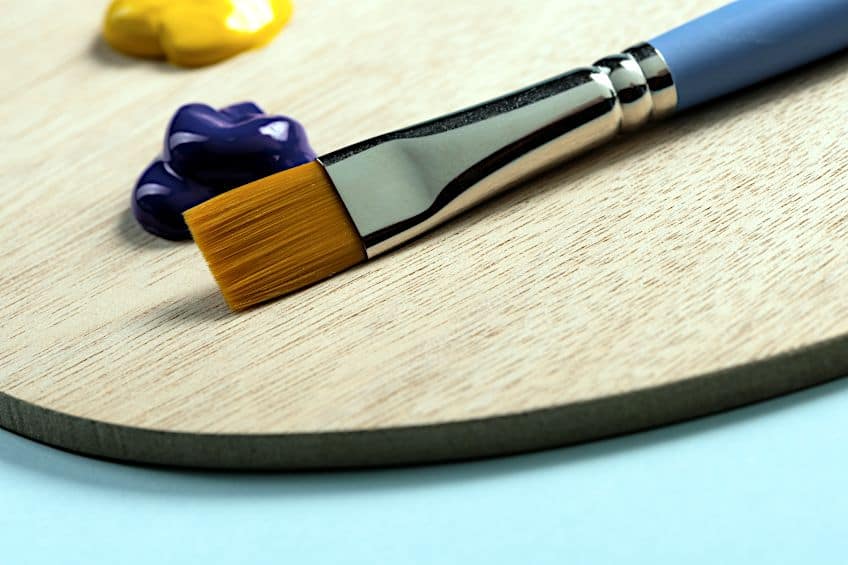
MDF board is thicker than Masonite, giving you stronger support for your painting. It is also cheaper, smoother, and more durable, making it a very good surface for acrylic paints. Priming the MFD board before painting is vital as the board is not water-resistant, so you can soak up more paint than you intend to use. It is also best that you seal your painting once you are finished painting.
Tips for Preparing Wood for Acrylic Painting
You can use acrylic paints to paint on wood and produce a great piece of art and may want to just start painting directly onto the wood surface, but it is vital that you first prepare the wood surface before painting. Below are certain tips to assist you in your wood preparation.
- First, sand the wood surface smoothly to remove all the ridges.
- If you are using a hardboard or Masonite surface, there is no need for sanding as the surface is already smooth.
- Wood is porous so it needs to be primed, including Masonite, so apply two to five coats of acrylic gesso.
- Priming allows the acrylic paint to be applied easier, making the colors more vibrant and lighter and preventing patchy paint.
- Without proper sealing, the acids in the wood can destroy your painting.
- Sealing the wood surface also prevents humidity stains, peeling, and rotting.
Other Painting Surfaces for Acrylics
Acrylic paint is a very versatile medium and can be applied to almost any type of surface like wood, canvas, and paper as we have already discussed. However, what about glass, fabric, and metal? Can you apply acrylic paint to other surfaces? Let us not consider some of these other painting surfaces for acrylics.

Glass
You may wonder if acrylic paint can be used on a glass surface, yes it can. You can paint mirrors, glasses, jars, vases, and much more. It is a great way for you to personalize many of these glass items you have in your home. However, glass is a very smooth surface, and smooth surfaces are not ideal for painting with acrylic paints, so a primer is required. You can create a rustic look, a frosted look, a textured look, and even a stained-glass look.
Remember to always seal your work for the best results.
Tips for Preparing Glass for Acrylic Painting
If you want the art piece you created to last, then you need to follow certain criteria to ensure the acrylic paint sticks to the glass surface and lasts for a long time. Follow these guidelines to make sure this happens.
- Make sure the glass surface is clean from any dirt or fingerprints by using some rubbing alcohol.
- If painting a glass or mug, ensure you do not apply any paint on the rim as it could cause damage if ingested.
- Use cotton wool or a paper towel to dry the glass properly.

- Apply an even coat of primer to the area you want to paint, using a sprayer or brush, and allow it to dry for 24 to 72 hours.
- Wash by hand, as repeated washing in the dishwasher can cause the paint to fade.
Metal
Can you use acrylic paints on metal surfaces? Acrylic paint is very versatile, and it will stick to a metal surface, but you need to first ensure that the surface is clean, before you begin with your painting. Take a clean cloth and make sure all the dirt and grime have been successfully removed from the surface. Next, you need to take a wire brush or some steel wool to make the surface rough which will ensure your acrylic paint will stick. Wash the surface with some clean warm water, and once that is dry, take some sandpaper and sand the surface lightly, and wipe clean.
Apply your primer, making sure it is the right type of primer that will work with acrylic paint as well as with the type of metal you are going to paint. Paint on the first coat and let this dry for around three to five hours. Apply the second coat and make sure it is properly dry before you apply the paint.
Tips for Preparing Metal for Acrylic Painting
If metal items in your home appear a little rusty, tarnished, or slightly outdated and worn, then allow acrylic paints to come to the rescue. You will be amazed at what you can do. See below for some tips to help you along the way.
- Make sure the wire brush removes all the rust and grime.
- Make use of some spirits to remove any oily residue.

- Ensure the item is completely dry before applying any paint.
- You should use the proper paint that goes with the metal surface.
- It is always advisable to seal the surface once you have finished painting.
Plastic
Many things are made of plastic today, and often you just want to brighten a plastic item up a little instead of throwing it away or recycling it. Plastic is non-porous, which means it is smooth and the paint has little or no adhesion to the plastic surface. However, with some effort, you can paint successfully on a plastic surface. It is all subject to the type of plastic and paints you are working with. Just like many other smooth surfaces, you need to make sure the plastic surface is properly prepared before you start to paint. Take some fine-grit sandpaper and gently sand the glossy surface, taking care not to press it too hard or you will scratch the surface.
Wipe the surface clean using water or some rubbing alcohol. Use some painter’s tape to cover areas you want to leave unpainted. Apply the primer, which will help the paint stick to the surface. Make sure the primer is dry before starting to paint. For a plastic surface, a spray can is the best to use.
Tips for Preparing Plastic for Acrylic Painting
If you want your plastic item to come out perfectly, then there are certain tips we can share with you that will help you to achieve this goal. Recycled plastic items can make great gifts. Here are a few tips.
- Make sure you use fine-grit sandpaper to prepare the surface.
- Do not press too hard, which could scratch the plastic surface.
- You can try using a liquid sander for a less abrasive effect.

- Ensure you use paint that is formulated for plastic surfaces.
- If you are painting a plastic cup or glass, do not let any paint get on the rim as paint can be harmful if ingested.
- Always prime the surface in advance and seal it after you are finished.
We have only covered a few of the surfaces for acrylic painting, meaning that there are many more that you can experiment with yourself. So, no matter what surface you choose, always make sure you prepare the surface correctly to create a lasting item!
Frequently Asked Questions
What Surface Does Acrylic Paint Adhere To?
Acrylic paint is very versatile and can adhere to most surfaces, but it will become more difficult to stick to smooth surfaces such as glass or metal. You need to roughen these smooth surfaces by sanding them, before you begin to paint, which allows the paint to stick properly.
What Are the Most Common Surfaces for Acrylic Paint?
Canvas is the most common and popular surface to use for your acrylic paint. A canvas can be bought in a pre-primed condition that requires no preparation, and you can start painting immediately.
What to Paint on If You Do Not Have a Canvas?
There are numerous surfaces to paint on like paper, mirrors, old furniture, and even walls. Simply use your imagination and you can create almost anything with the surfaces you can find in your own home.
In 2005, Charlene completed her Wellness Diplomas in Therapeutic Aromatherapy and Reflexology from the International School of Reflexology and Meridian Therapy. She worked for a company offering corporate wellness programs for a couple of years, before opening up her own therapy practice. It was in 2015 that a friend, who was a digital marketer, asked her to join her company as a content creator, and this is where she found her excitement for writing.
Since joining the content writing world, she has gained a lot of experience over the years writing on a diverse selection of topics, from beauty, health, wellness, travel, and more. Due to various circumstances, she had to close her therapy practice and is now a full-time freelance writer. Being a creative person, she could not pass up the opportunity to contribute to the Art in Context team, where is was in her element, writing about a variety of art and craft topics. Contributing articles for over three years now, her knowledge in this area has grown, and she has gotten to explore her creativity and improve her research and writing skills.
Charlene Lewis has been working for artincontext.org since the relaunch in 2020. She is an experienced writer and mainly focuses on the topics of color theory, painting and drawing.
Learn more about Charlene Lewis and the Art in Context Team.
Cite this Article
Charlene, Lewis, “Painting Surfaces for Acrylics – Acrylic Paint on Different Surfaces.” Art in Context. May 8, 2023. URL: https://artincontext.org/painting-surfaces-for-acrylics/
Lewis, C. (2023, 8 May). Painting Surfaces for Acrylics – Acrylic Paint on Different Surfaces. Art in Context. https://artincontext.org/painting-surfaces-for-acrylics/
Lewis, Charlene. “Painting Surfaces for Acrylics – Acrylic Paint on Different Surfaces.” Art in Context, May 8, 2023. https://artincontext.org/painting-surfaces-for-acrylics/.


